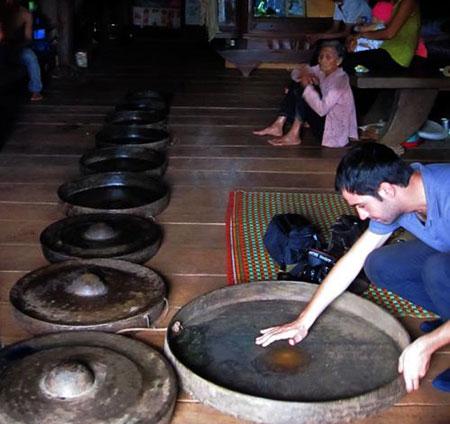Fascinated by the centuries-old Gong music of ethnic minority communities in Viet Nam, Vincenzo Della Ratta, an Italian researcher, has travelled to the Central Highlands of Viet Nam to learn about the local Gong culture, on which he will write his doctoral thesis.
>> Read The Cultural Space of Gong in the Central Highlands
As a student of traditional music, Ratta, 32, said he always enjoyed watching Viet Nam’s Gia Rai ethnic minority group (from the central highland province of Gia Lai) play Gong music on television. In 2006, he really fell in love with Gong culture when he witnessed a group of artisans from the central highland province of Dak Lak performing in Turin.
In 2007. he decided to travel to the Central Highlands of Viet Nam, where the culture was born and is still preserved, to learn more about it.
Since then, he has visited villages in Dak Lak to observe villagers play the Gong and even join in, which he found to be an invaluable experience. Over two years, he attended many festivals and ritual ceremonies where local ethnic people performed music with Gongs.

“I realised that Gong music was always performed at rituals and community activities to express the communication between humans and gods, and to connect people together,” he said.
Ethnic minority artists in the Central Highlands taught Ratta how to play Gongs and to adjust the Gong sounds to suit particular contexts and space.
“The local people involve me in their culture in very unconventional ways. At first, when I tried to attend rituals and funerals of local people, they didn’t let me join but still offered me ruou can (wine drunk from jars through pipes), their traditional drink,” he said.
“As I wanted to communicate with them, I drank and sometimes felt slightly inebriated, but by then they had already offered me a Gong to beat. That was an unforgettable experience.”
Ratta finds the Gong a very interesting musical instrument, with all the different sounds it makes each time he beats it.
“Beating on different positions on the same Gong also makes different sounds,” said Ratta. “Its sound is quite mysterious; it’s hard to say how much of it can be understood because each group has its own collection of Gongs and their own ways to use them.”
Currently, Ratta is researching folk music at the Viet Nam Research Centre in Turin, Italy. Last year, he released a book on Vietnamese performing arts and next year he will be proposing his thesis on Gong music in Rome.

By then, he will visit Viet Nam to consult Gong artisans to fulfill his research. He said the research satisfied his own passion while also introducing Vietnamese Gong music to his country.
During the time he has taken to research Gong music in Viet Nam, Ratta has also expressed his concern about preserving the heritage.
“In my opinion, preserving means not changing it,” he said. “Let the local people play the music in their way, and let them decide how to protect and promote their own heritage because they are the ones who know it best.”
VNS
